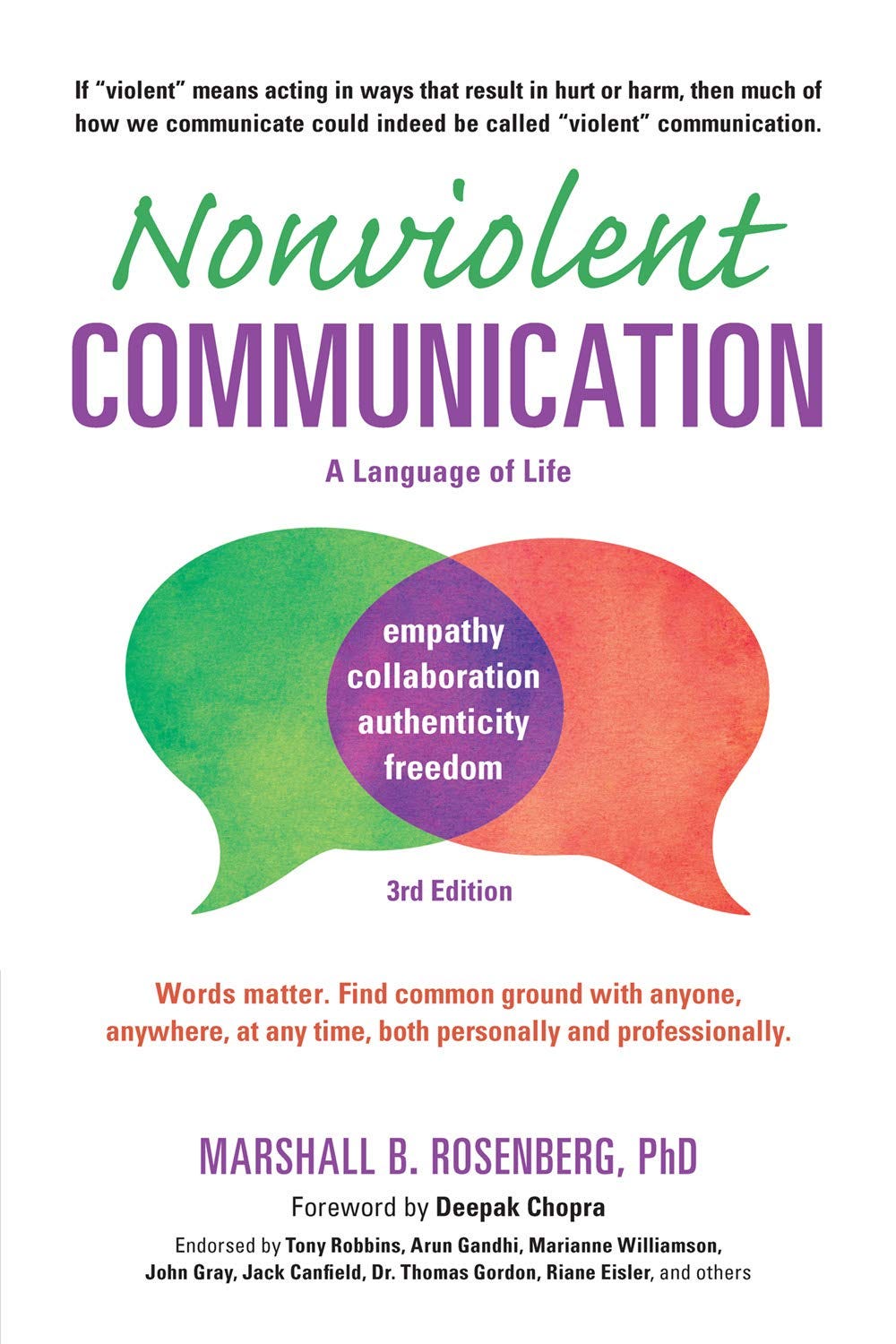Nonviolent Communication
A book review
I’ve just read Marshall Rosenberg’s “Nonviolent Communication” (NVC). One of the first acts of Satya Nadella when he became CEO of Microsoft was apparently to ask top executives to read this great book. Here’s what I learnt…
Despite its title, the book doesn’t teach how to communicate in a nonviolent way. At least not as how you may imagine. First, because the book acknowledges that violence is sometimes necessary, for self-defense. And then, because even compliments such as “You did a good job” are considered “life alienating” by the author and should be expressed differently.
What’s Nonviolent Communication (NVC)? Its main theory is that:
Judgments of others are alienated expressions of our own unmet needs.
If we express our needs, we have a better chance of getting them met.
For instance, if someone says to their partner: “You always stay late at work, you love your work more than you love me!”, they say that their need for intimacy is not being met.
It makes a lot of sense to me because in product management we have to find customers’ underlying needs behind their feedback, otherwise we may build the wrong features. As Henry Ford said (or not): “If I had asked people what they wanted, they would have said faster horses.”
So how should we communicate? The 4 steps of NVC are:
We objectively observe. As Indian philosopher Jiddu Krishnamurti said: “Observing without evaluating is the highest form of human intelligence.”
We state how we feel (“sad”, “angry”, etc.).
We connect our feeling with our need: “I feel … because I need …”
We make a request in clear, positive, concrete action language. To reveal what we really want the other person to do, and not what we want them not to do.
Not only do we use these 4 steps to express ourselves—whether it’s for criticism or compliment—but also to empathically receive comments from others. To receive empathically you “listen to what people are needing rather than what they are thinking”. The book here recalls the different techniques of active listening such as paraphrasing, reflecting back messages, and using silences.
So there’s nothing fundamentally new in the book, but it presents a powerful theory in a clear and actionable way. There are many examples from all around the world and in different settings (couples, international conflicts, gang violence, self-judgment and depression, etc.) which help to understand NVC. It’s short and worth reading!
Also, one may wonder: if we express ourselves in an inefficient way that leads to violence, how come we evolved to communicate like that? According to the author, it’s because “we have inherited a language that served kings and powerful elites in domination societies”. He develops:
It would be in in the interest of kings, czars, nobles, and so forth that the masses be educated in a way that renders them slavelike in mentality. The language of wrongness, should, and have to is perfectly suited for this purpose: the more people are trained to think in terms of moralistic judgments that imply wrongness and badness, the more they are being trained to look outside themselves—to outside authorities—for the definition of what constitutes right, wrong, good, and bad. When we are in contact with our feelings and needs, we humans no longer make good slaves and underlings. […] The masses, discourages from developing awareness of their own needs, have instead been educated to be docile and subservient to authority. Our culture implies that needs are negative and destructive; the word needy applied to a person suggests inadequacy or immaturity. When people express their needs, they are often labeled selfish, and the use of the personal pronoun I is at times equated with selfishness or neediness.
I like this reasoning… What do you think?
Antoine


